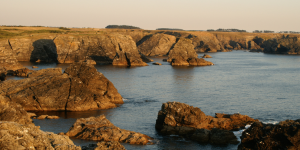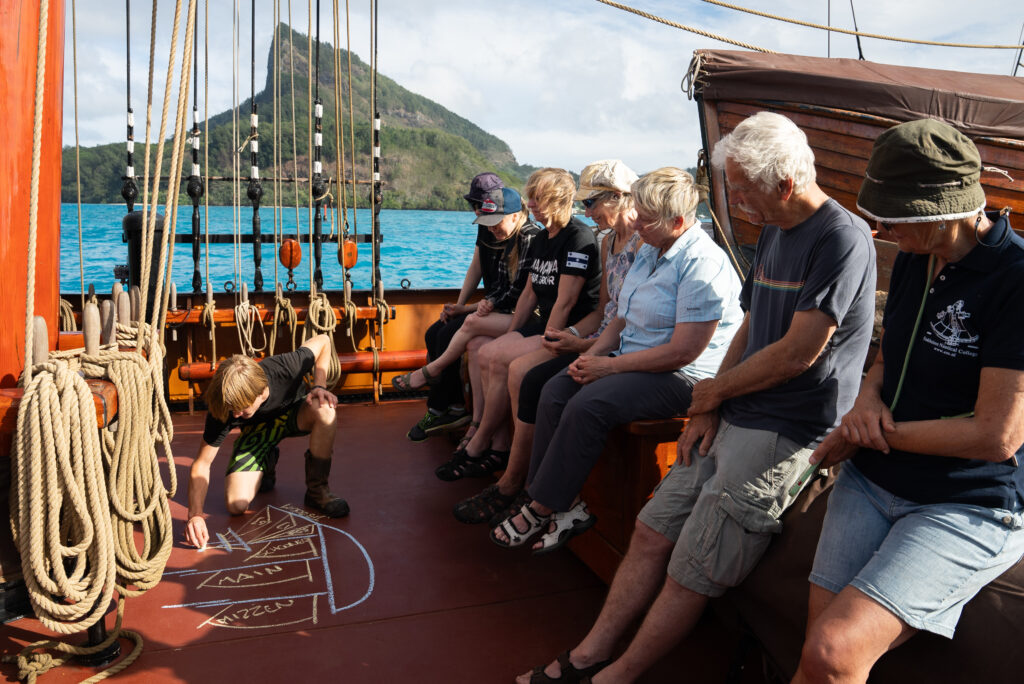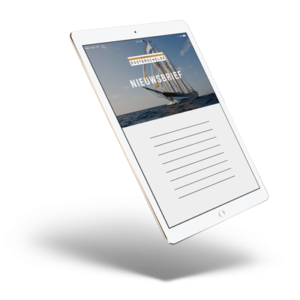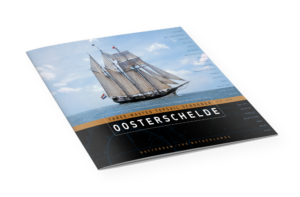12 Jul Gambier – Papeete
12 July 2024
Gambier – Papeete
The trip starts well. After days with lots of wind and rain, it is a beautiful day with sunshine and the wind has also eased a little. As we sail out of the atoll, we enjoy the many shades of blue and green in the water. As soon as we cross the last ring of coral, it immediately gets deep. Within a few hundred metres, the water depth increases from just 5 metres to 2000 metres. We set sail and in a nice flat sea we immediately do over 7 knots. This morning, there was no wind at all for a while and we motored. Nor was it boring as we caught two huge Mahi Mahi in quick succession. At 1.50 metres long and weighing 25 kilos, the first was the biggest Mahi Mahi we have ever caught.
We want to cover some distance first, and now that the wind has returned, we manage just fine. The second half of the trip we will know how much time we have left and then we will see which atolls we can possibly visit . That’s not so easy, because huge areas here are hardly charted. Everywhere on the sea charts there are warnings: “Doubtfull data” or ” large depth anomalies may be expected”. For those who still don’t get it, whole areas are marked with a thick magenta line as “area to be avoided”. And we are talking about areas of 180 by 100 kilometres.
For almost everyone on board, it is incomprehensible that it still exists: white spots on the map. Areas where we only know approximately what exactly is there. The French nautical charts explain it: a lot of information has been put into the chart based on satellite photos. That there is an island may be fairly certain, but exactly how deep it is around that island, whether there are reefs or rocks, it is all impossible to deduce exactly from those kinds of photos. For that, a ship would have to take soundings, but in an area like this there is simply no economic need for that.
By the way, many atolls are completely closed. So you wouldn’t be able to sail there. But there are also many where, artificially or otherwise, there is a passage in the ring of coral. An additional danger , apart from bad charts, are the strong currents. Not only because of low tides, but also because waves break over the ring of coral, the atolls fill up and the water level there is often higher than in the surrounding sea. This results in currents of usually 4 to 8, but sometimes as high as 12 – 20 knots in such a passage. That is a bit too crazy for us so if we take such a passage at all, we have to time it very precisely. Usually, at the transition from low tide to high tide, there is half an hour with a bit less current. The trick is to calculate the moment







